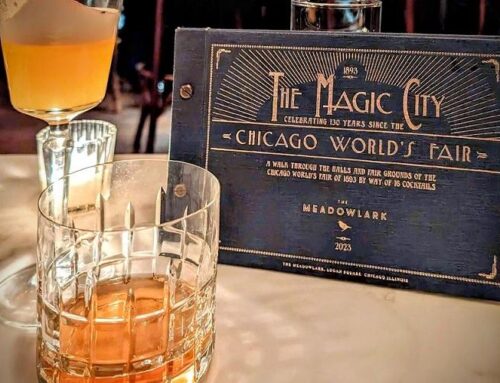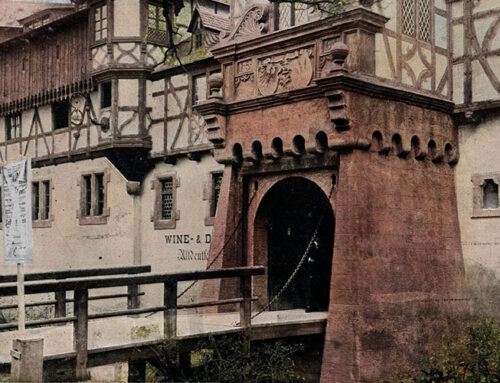“Passing under the Stony Island viaduct, we are in a new world, which, while it does not pretend to instruct, still conveys quite an amount of real knowledge, though carefully enshrouded in a sugarcoating of amusement.”
—“The World’s Columbian Exposition, a View from the Ferris Wheel” Scientific American September 9, 1893, pp. 169 70.
The Midway Plaisance, a six hundred-foot wide by one-mile-long strip of land connecting Jackson Park on the east to Washington Park on the west, served as the entertainment district of the 1893 World’s Fair in Chicago. As visitors left the White City behind, they passed into a bazaar of all nations where they could ride on a camel or along a railway made of ice, listen to a concert by a Javanese gamelan or a German military band, and watch glassblowing or a Chinese drama.

The Midway Plaisance by T. de Thulstrup shows a view looking east after passing under the Stony Island viaduct, with the Java Village on the right and the South Sea Islanders on the left. [Image from Burnham, Daniel Hudson; Millet, Francis Davis The Book of the Builders Vol 1. No 3, May 5, 1894.]

The eastern end of Midway Plaisance in 2019. [Image from Google Maps.]
The new design affects the easternmost section of the Midway, between South Stoney Island Avenue on the east and the Metra Electric tracks on the west, and from East 59th Street on the north to East 60th Street on the south. During the 1893 World’s Fair, this area housed the Irish Village with Blarney Castle sponsored by the Irish Industries, the Philadelphia Workingman’s Model Home, the World’s Congress of Beauty (aka the International Dress and Costume Company), the Adams Express Company building, Diamond Match Company building, an Ambulance Station and a Fire and Guard Station, and (later into the Fair) the Hindoo Jugglers.

The eastern end of Midway Plaisance during the 1893 World’s Fair was home to six attractions and a nursery.
Along the western edge of this plot, closest to the train tracks, stood a large Nursery Exhibit managed by the Horticultural Department of the Columbian Exposition. Here grew ornamental trees, shrubs, evergreens, catalpas, fruit trees, nut trees, pear seedlings, California citrus trees, olive trees, eucalyptus, flowering plants, a Wisconsin Cranberry Marsh, and much, much more. Some visitors may have spent time inspecting the weed exhibit (!) but more likely ventured further west along the Plaisance to check out the Ferris Wheel and other attractions.
The construction project, estimated at $3 million and headed by Site Design Group, is scheduled to begin in early 2023. Proposed changes include grading the land to return a symmetrical balance and adding a stormwater infiltration system, a new path, and a universally-accessible play area.

Proposed improvements to the eastern end of Midway Plaisance, design by Site Design Group.
With so few markers commemorating the site of the 1893 World’s Columbian Exposition, perhaps a tribute to the fragrant and varied nursery that once occupied this space could be included in the new design. The Park District is accepting public feedback on the east Midway redesign.






Leave A Comment